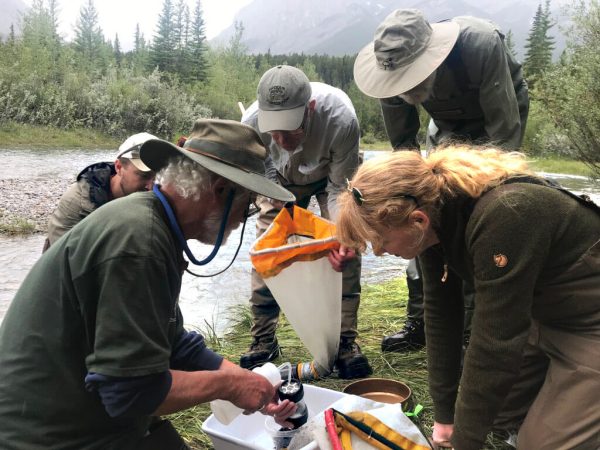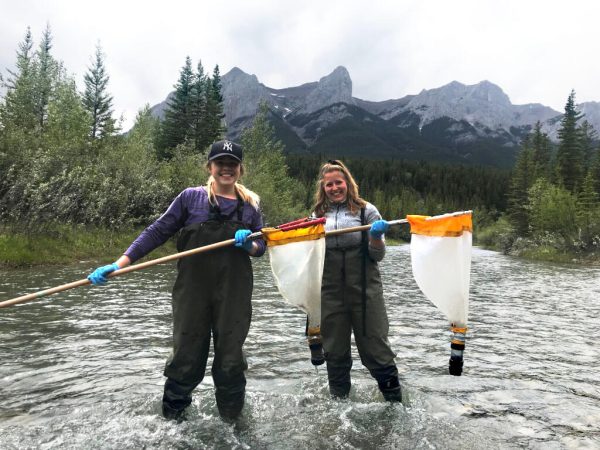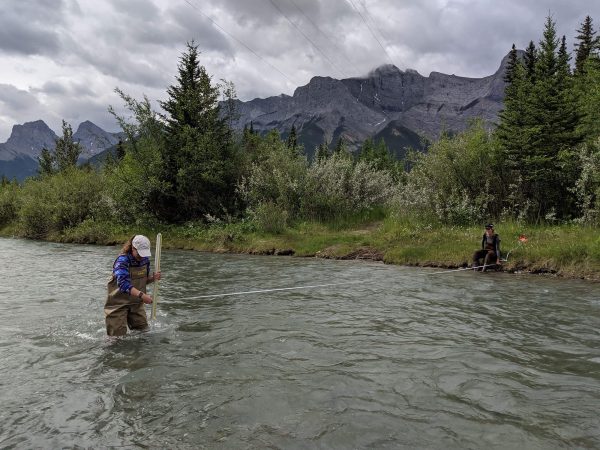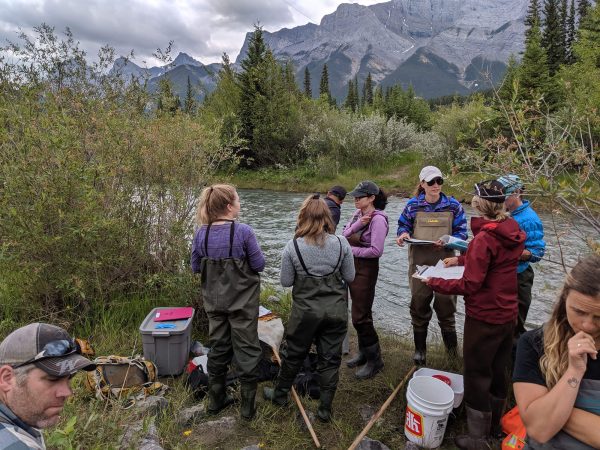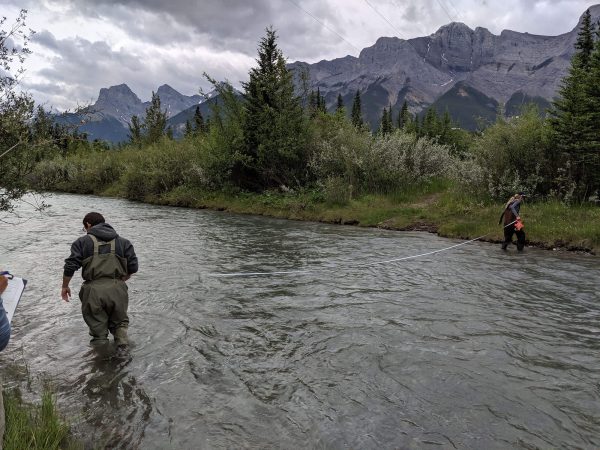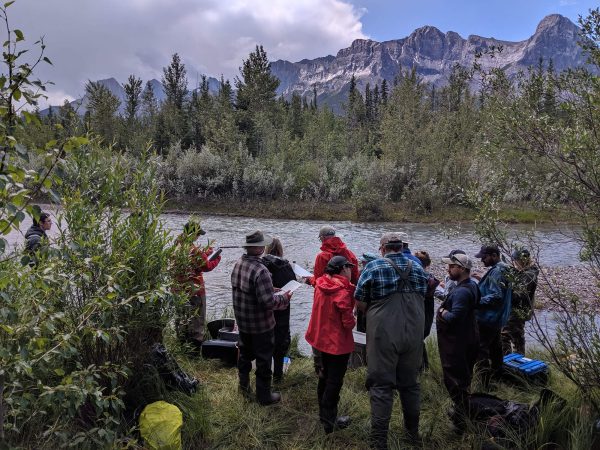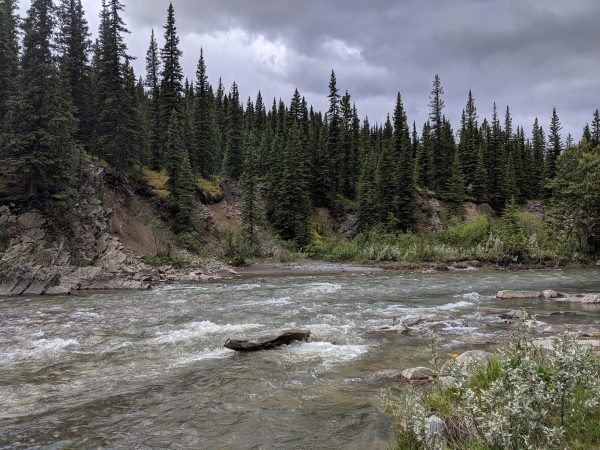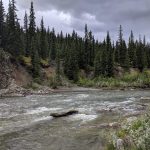STREAM Team brings CABIN training to Canmore
STREAM is a collaboration between Living Lakes Canada, World Wildlife Fund (WWF) Canada, Environment and Climate Change Canada and the University of Guelph, which involves the collection of eDNA from rivers across Canada for stream health assessments. Interested individuals and organizations are trained and certified using an adapted CABIN protocol to include eDNA analysis.
By Catherine Paquette, WWF-Canada
On July 16-17, the STREAM team led a CABIN field practicum on the beautiful Bow River in Canmore, Alberta, where 18 people received their certification.
The Canmore group was incredibly diverse and high-capacity: it included university students and researchers, national park staff, professional scientists and consultants, as well as staff and volunteers from local watershed groups and NGOs. This diversity of knowledge and experience allowed for great exchanges of ideas throughout the two-day course. Information was shared not only by the instructor to the participants, but it also flowed from the participants back to the STREAM team. Having participants with such diverse backgrounds really allowed the two-day course to be a dialogue and all participants left with a better understanding of not only the CABIN field protocol but also what kind of work is being done in the water world.
WWF-Canada truly believes that it will take people from all backgrounds to ensure we have a complete picture of freshwater health in Canada. In 2017, WWF-Canada released its Watershed Reports, which was the first national picture of the health of and threats to Canada’s freshwater. One of the major findings was that most of Canada’s watershed were data deficient; the required data to properly assess the rivers and streams either didn’t exist or was made unavailable. Fully 112 of 167 sub-watersheds are data deficient for the benthic invertebrate indicator. One of the main recommendations brought forward by WWF-Canada as a result of this data deficiency was the need to elevate multiple approaches to water monitoring.
While the federal government must be expected to play a significant and leading role in aquatic monitoring, Canada is just too big and diverse for a single organization to be responsible for all of it. Community-based water monitoring (CBWM), alongside academia and local and provincial governments, should be seen as a great opportunity to increase the amount of aquatic data collected, leading to a better understanding of our water resources. Groups across Canada are already taking charge and monitoring their home waters, and through technological advances such as open databases, this is becoming easier than ever.
Another of these technological advances that will benefit CBWM is DNA metabarcoding. This state-of-the-art technology will allow benthic samples collected by CBWM groups to be analyzed much more quickly and with less cost than ever before.
WWF-Canada is excited to be a member of STREAM for that very reason, giving CBWM organizations from across Canada the knowledge, training, and support required for them to be able to not only monitor their own waters but play a critical role in understanding the state of freshwater in Canada.


